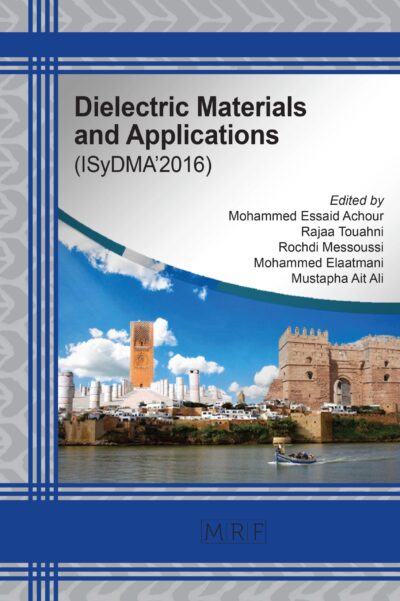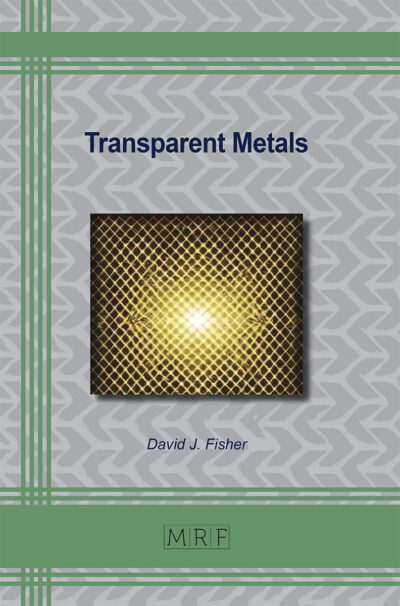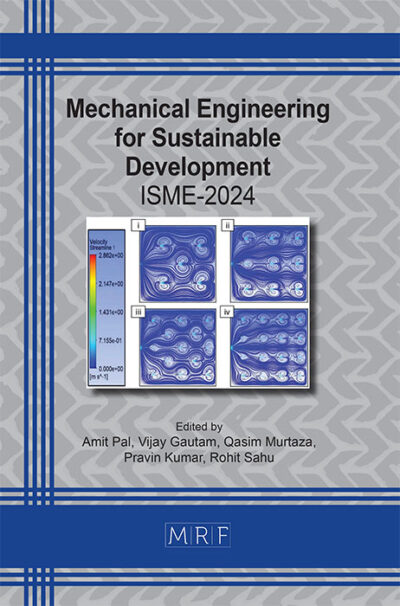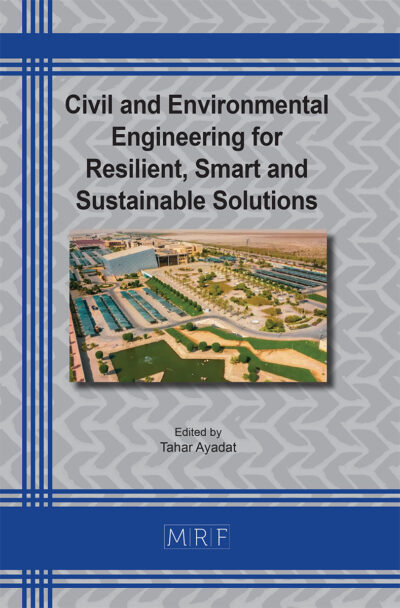Application of artificial neural networks (ANN) to evaluate centrifugal pump characteristics
Nayeemuddin MOHAMMED, Danish AHMED, Tahar Ayadat, Faizan AHMED, Deepanraj Balakrishnan, Hiren MEWADA, Muhammad AJMAL, Tasneem SULTANA
Abstract. This paper uses an Artificial Neural Network (ANN) technique to give an experimental and comparative examination of centrifugal pump characteristics. Comprehensive physical testing is a common component of traditional pump performance evaluation techniques, which may be expensive and time-consuming. In this study, we created an ANN model to forecast important performance metrics, such as speed, torque, pressure based on input data. These metrics include flow discharge, height, hydraulic power, motor power, and efficiency. The ANN model was trained and validated using experimental data that came from a series of carefully monitored experiments conducted on a typical centrifugal pump. Using a Levenberg Marquardt backpropagation approach, the ANN model was trained to attain high prediction accuracy by refining the topology of the network found to be high R-squared value of 0.98 and low RMSE by effectively predicting important parameters. Next, in order to assess the ANN model’s predictive power, its performance was contrasted with the outcomes of the experiments. The results show that there is a strong degree of correlation between the predicted and experimental data, indicating that the ANN technique offers a dependable and effective way to forecast centrifugal pump characteristics.
Keywords
Neural Networks, Centrifugal Pump, Power, Efficiency, Artificial Intelligence
Published online 2/25/2025, 9 pages
Copyright © 2025 by the author(s)
Published under license by Materials Research Forum LLC., Millersville PA, USA
Citation: Nayeemuddin MOHAMMED, Danish AHMED, Tahar Ayadat, Faizan AHMED, Deepanraj Balakrishnan, Hiren MEWADA, Muhammad AJMAL, Tasneem SULTANA, Application of artificial neural networks (ANN) to evaluate centrifugal pump characteristics, Materials Research Proceedings, Vol. 48, pp 883-891, 2025
DOI: https://doi.org/10.21741/9781644903414-96
The article was published as article 96 of the book Civil and Environmental Engineering for Resilient, Smart and Sustainable Solutions
![]() Content from this work may be used under the terms of the Creative Commons Attribution 3.0 license. Any further distribution of this work must maintain attribution to the author(s) and the title of the work, journal citation and DOI.
Content from this work may be used under the terms of the Creative Commons Attribution 3.0 license. Any further distribution of this work must maintain attribution to the author(s) and the title of the work, journal citation and DOI.
References
[1] M. Stan, I. Pana, M. Minescu, A. Ichim, and C. Teodoriu, “Centrifugal Pump Monitoring and Determination of Pump Characteristic Curves Using Experimental and Analytical Solutions,” Processes, vol. 6, no. 2, Art. no. 2, Feb. 2018 https://doi.org/10.3390/pr6020018.
[2] L. C. Fairbank, “Effect on the Characteristics of Centrifugal Pumps,” Trans. Am. Soc. Civ. Eng., vol. 107, no. 1, pp. 1564–1575, Jan. 1942 https://doi.org/10.1061/TACEAT.0005469.
[3] R. T. Knapp, “Complete Characteristics of Centrifugal Pumps and Their Use in the Prediction of Transient Behavior,” Trans. Am. Soc. Mech. Eng., vol. 59, no. 8, pp. 683–689, Feb. 2023 https://doi.org/10.1115/1.4020576.
[4] W. Han, L. Nan, M. Su, Y. Chen, R. Li, and X. Zhang, “Research on the Prediction Method of Centrifugal Pump Performance Based on a Double Hidden Layer BP Neural Network,” Energies, vol. 12, no. 14, Art. no. 14, Jan. 2019 https://doi.org/10.3390/en12142709.
[5] B. Kim, M. H. Siddique, A. Samad, G. Hu, and D.-E. Lee, “Optimization of Centrifugal Pump Impeller for Pumping Viscous Fluids Using Direct Design Optimization Technique,” Machines, vol. 10, no. 9, Art. no. 9, Sep. 2022 https://doi.org/10.3390/machines10090774.
[6] M. Khalil, M. Elgohary, and A. Shaito, Application of artificial neural network for the prediction of trimmed impeller size of a centrifugal pump. 2013.
[7] E. Sayed, A. Abdelhady, and N. Ghazaly, “Classification Model using Neural Network for Centrifugal Pump Fault Detection,” Int. J. Syst. Signal Control Eng. Appl., vol. 13, pp. 120–126, Jul. 2020 https://doi.org/10.36478/ijssceapp.2020.120.126.
[8] A. Srivastava et al., “Response surface methodology and artificial neural network modelling for the performance evaluation of pilot-scale hybrid nanofiltration (NF) & reverse osmosis (RO) membrane system for the treatment of brackish ground water,” J. Environ. Manage., vol. 278, p. 111497, Jan. 2021 https://doi.org/10.1016/j.jenvman.2020.111497.
[9] F. Ahmed, M. S. Abdul Aziz, F. Shaik, and C. Y. Khor, “Experimental and numerical investigation of an innovative desalination unit under laminar, transient, and turbulent flow conditions,” Chem. Eng. Res. Des., vol. 208, pp. 683–694, Aug. 2024 https://doi.org/10.1016/j.cherd.2024.07.043.
[10] F. Ahmed, M. S. A. Aziz, F. Shaik, and C. Y. Khor, “Optimization of a novel spray flash desalination system integrated with concentrated solar power utilizing response surface methodology,” Desalination, vol. 558, p. 116640, Jul. 2023 https://doi.org/10.1016/j.desal.2023.116640.
[11] F. Ahmed, “Efficiency enhancement of a refrigerator integrated with auxiliary nanofluids,” J. Therm. Anal. Calorim., vol. 147, no. 19, pp. 10613–10623, Oct. 2022 https://doi.org/10.1007/s10973-022-11316-5.
[12] S. Thakkar, H. Vala, V. K. Patel, and R. Patel, “Performance improvement of the sanitary centrifugal pump through an integrated approach based on response surface methodology, multi-objective optimization and CFD,” J. Braz. Soc. Mech. Sci. Eng., vol. 43, no. 1, p. 24, Jan. 2021 https://doi.org/10.1007/s40430-020-02753-0.
[13] J. Pei, W. Wang, M. K. Osman, and X. Gan, “Multiparameter optimization for the nonlinear performance improvement of centrifugal pumps using a multilayer neural network,” J. Mech. Sci. Technol., vol. 33, no. 6, pp. 2681–2691, Jun. 2019 https://doi.org/10.1007/s12206-019-0516-6.
[14] J. Yu, E. Akoto, D. K. Degbedzui, and L. Hu, “Predicting Centrifugal Pumps’ Complete Characteristics Using Machine Learning,” Processes, vol. 11, no. 2, Art. no. 2, Feb. 2023 https://doi.org/10.3390/pr11020524.
[15] R. Nouri and A. Vasel-Be-Hagh, “Deciphering unknown upstream conditions and downstream turbulent flow evolution via neural networks,” Ocean Eng., vol. 297, p. 116977, Apr. 2024 https://doi.org/10.1016/j.oceaneng.2024.116977.
[16] R. Guo, X. Li, and R. Li, “Multi-objective optimization design in a centrifugal pump volute based on an RBF neural network and genetic algorithm,” Adv. Mech. Eng., vol. 15, no. 3, p. 16878132231160390, Mar. 2023 https://doi.org/10.1177/16878132231160390.
[17] C. H. Liu, C. Vafidis, and J. H. Whitelaw, “Flow Characteristics of a Centrifugal Pump,” J. Fluids Eng., vol. 116, no. 2, pp. 303–309, Jun. 1994 https://doi.org/10.1115/1.2910272.
[18] M. H. Shojaeefard, M. Tahani, M. B. Ehghaghi, M. A. Fallahian, and M. Beglari, “Numerical study of the effects of some geometric characteristics of a centrifugal pump impeller that pumps a viscous fluid,” Comput. Fluids, vol. 60, pp. 61–70, May 2012 https://doi.org/10.1016/j.compfluid.2012.02.028.
[19] S. Ullah, “Closure to ‘Discussion of “Some Exact Analytical Solutions for Two-Dimensional Flow of an Incompressible Second Grade Fluid”’ (2015, ASME J. Fluids Eng., 137(10), p. 101206),” J. Fluids Eng., vol. 146, no. 126001, Jul. 2024 https://doi.org/10.1115/1.4065809.
[20] S. Huang, G. Qiu, X. Su, J. Chen, and W. Zou, “Performance prediction of a centrifugal pump as turbine using rotor-volute matching principle,” Renew. Energy, vol. 108, pp. 64–71, Aug. 2017 https://doi.org/10.1016/j.renene.2017.02.045.
[21] D. Nagarajan, T. Rajagopal, N. Meyappan, D. Nagarajan, T. Rajagopal, and N. Meyappan, “A comparative study on prediction models for strength properties of LWA concrete using artificial neural network,” Rev. Constr., vol. 19, no. 1, pp. 103–111, Apr. 2020 https://doi.org/10.7764/rdlc.19.1.103-111.
[22] O. Yemenici and M. Donmez, “Estimation of the performance of different pumps using non-Newtonian fluids in various operating conditions with artificial neural network,” Arab. J. Sci. Eng., Feb. 2024 https://doi.org/10.1007/s13369-024-08729-9.
[23] L. Zhang, D. Wang, G. Yang, Q. Pan, W. Shi, and R. Zhao, “Optimization of Hydraulic Efficiency and Internal Flow Characteristics of a Multi-Stage Pump Using RBF Neural Network,” Water, vol. 16, no. 11, Art. no. 11, Jan. 2024 https://doi.org/10.3390/w16111488.
[24] J. Zhang, S. Yuan, Y. Shen, and W. Zhang, “Performance Prediction for a Centrifugal Pump with Splitter Blades Based on BP Artificial Neural Network,” in Life System Modeling and Intelligent Computing, K. Li, X. Li, S. Ma, and G. W. Irwin, Eds., Berlin, Heidelberg: Springer, 2010, pp. 223–229 https://doi.org/10.1007/978-3-642-15859-9_31.
[25] S. Farokhzad, H. Ahmadi, A. Jaefari, and M. R. Kohan, “897. Artificial neural network based classification of faults in centrifugal water pump,” . VOLUME, vol. 14, no. 4.
[26] N. Mohammed, P. Palaniandy, F. Shaik, B. Deepanraj, and H. Mewada, “Statistical analysis by using soft computing methods for seawater biodegradability using ZnO photocatalyst,” Environ. Res., vol. 227, p. 115696, Jun. 2023 https://doi.org/10.1016/j.envres.2023.115696.
[27] W. Wang, Q. Deng, J. Pei, J. Chen, and X. Gan, “Discrete Optimization on Unsteady Pressure Fluctuation of a Centrifugal Pump Using ANN and Modified GA,” Chin. J. Mech. Eng., vol. 36, no. 1, p. 84, Jul. 2023 https://doi.org/10.1186/s10033-023-00915-4.
[28] M. Nayeemuddin, asiz andi, A. K. Mohammad, Feroz Shaik, M. Hiren, and S. Tasneem, “A comprehensive review on computing methods for the prediction of energy cost in Kingdom of Saudi Arabia,” in Materials Research Proceedings, Aug. 2024, pp. 156–163 https://doi.org/10.21741/9781644903216-21.
[29] O. Yüksel and B. Köseoğlu, “Modelling and performance prediction of a centrifugal cargo pump on a chemical tanker,” J. Mar. Eng. Technol., vol. 19, no. 4, pp. 278–290, Nov. 2020 https://doi.org/10.1080/20464177.2019.1665330.
[30] N. Mohammed, P. Palaniandya, F. Shaik, and H. Mewada, “Experimental and Computational analysis for optimization of seawater biodegradability using photocatalysis.,” IIUM Eng. J., vol. 24, no. 2, pp. 11–33, Jul. 2023 https://doi.org/10.31436/iiumej.v24i2.2650.
[31] N. Mohammed, A. Asiz, M. A. Khasawneh, H. Mewada, and T. Sultana, “Machine learning and RSM-CCD analysis of green concrete made from waste water plastic bottle caps: Towards performance and optimization,” Mech. Adv. Mater. Struct., pp. 1–9, Aug. 2023 https://doi.org/10.1080/15376494.2023.2238220.
[32] L. Obregon, G. Valencia, and J. Duarte Forero, “Efficiency Optimization Study of a Centrifugal Pump for Industrial Dredging Applications Using CFD,” Int. Rev. Model. Simul. IREMOS, vol. 12, no. 4, p. 245, Aug. 2019 https://doi.org/10.15866/iremos.v12i4.18009.
[33] N. Mohammed, P. Palaniandy, F. Shaik, H. Mewada, and D. Balakrishnan, “Comparative studies of RSM Box-Behnken and ANN-Anfis fuzzy statistical analysis for seawater biodegradability using TiO2 photocatalyst,” Chemosphere, vol. 314, p. 137665, Feb. 2023 https://doi.org/10.1016/j.chemosphere.2022.137665.
[34] M. Bashiri, S. Derakhshan, and J. Shahrabi, “Design Optimization of a Centrifugal Pump Using Particle Swarm Optimization Algorithm,” Int. J. Fluid Mach. Syst., vol. 12, no. 4, pp. 322–331, Dec. 2019 https://doi.org/10.5293/IJFMS.2019.12.4.322.
[35] T. Engin, “Prediction of relative efficiency reduction of centrifugal slurry pumps: Empirical- and artificial-neural network-based methods,” Proc. Inst. Mech. Eng. Part J. Power Energy, vol. 221, no. 1, pp. 41–50, Feb. 2007 https://doi.org/10.1243/09576509JPE224.
“”
“”













